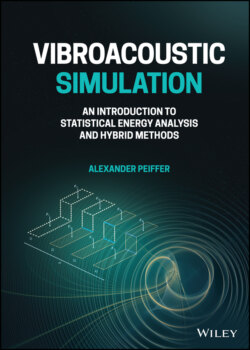Читать книгу Vibroacoustic Simulation - Alexander Peiffer - Страница 40
1.5.3 Correlation Functions for Random Time Signals
ОглавлениеIn the above considerations we have taken the values from an ensemble of random processes or signals taken at t1. We can also define a correlation coefficient for values taken from two processes at different times t1 and t2:
(1.149)
The numerator is called the cross correlation function cross correlation:
(1.150)
If the two processes are stationary the value of the cross correlation function depends only on the distance between the two times, i.e. t2=t1+τ. τ is called the lag or separation between the two time samples and we can write:
(1.151)
It also makes sense to correlate the function f(t) with itself at later moments f(t+τ). This is called the autocorrelation function defined by:
(1.152)
This function will later enable us to describe the spectrum of random functions. At τ = 0 the value is known as variance of f(t) as given by Equation (1.137):
(1.153)
The autocorrelation is symmetric in time, proven by:
(1.154)
In addition some useful properties can be derived for the cross correlation function
(1.155)
So we get finally
(1.156)
For the stationary ergodic process we can replace the ensemble averaging by the average over time
(1.157)
